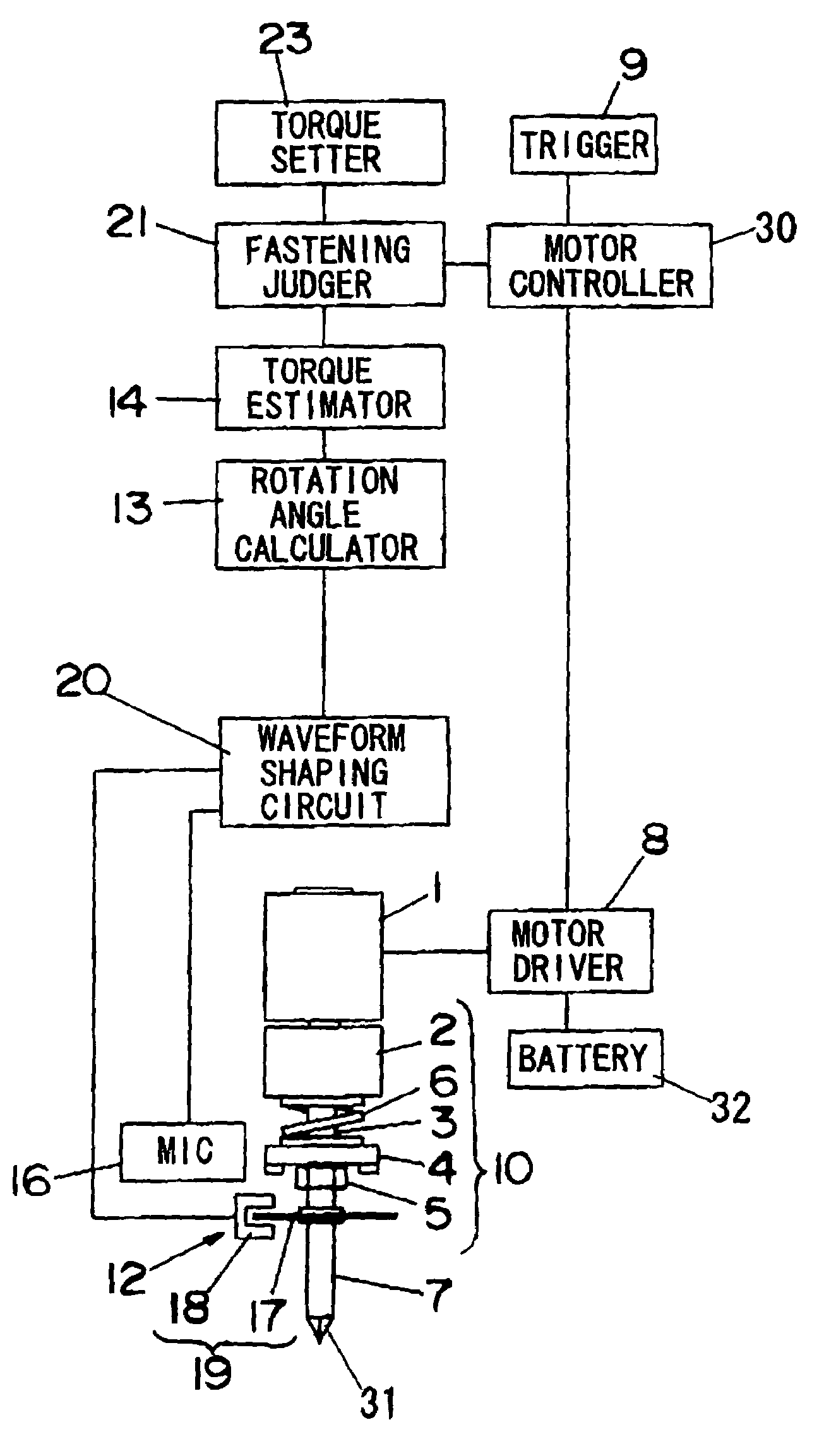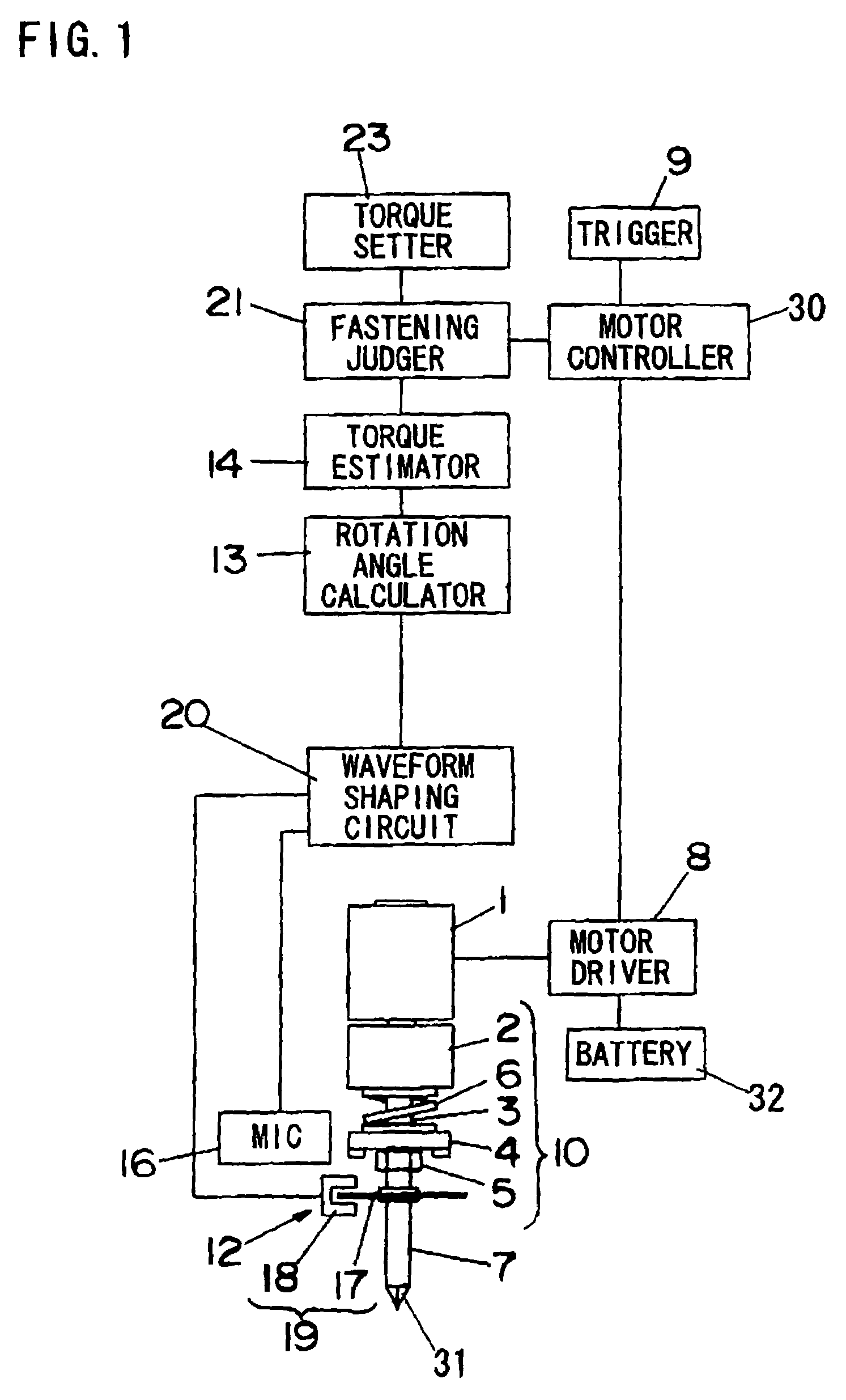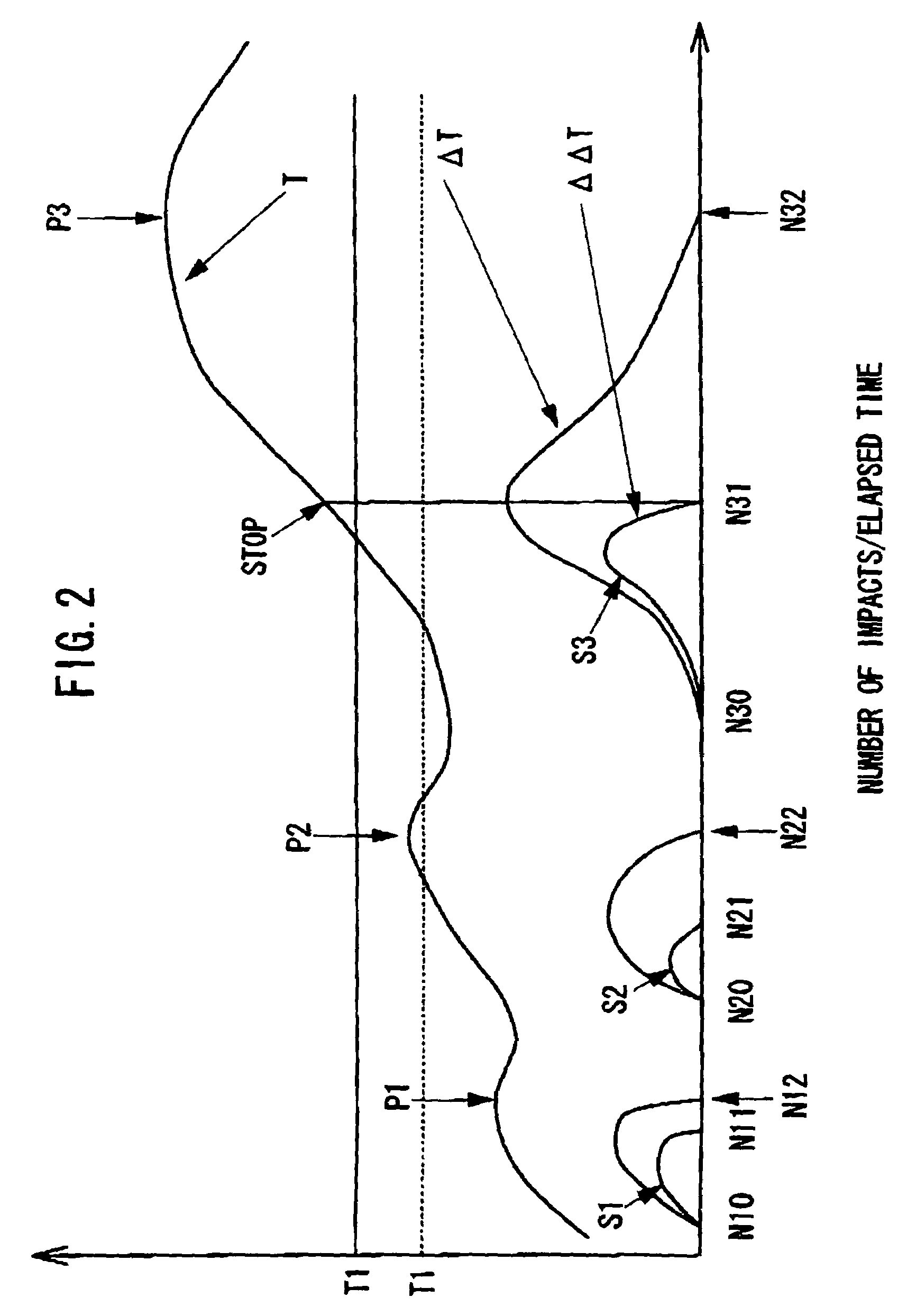Power fastening tool
a fastening tool and power technology, applied in the direction of force/torque/work measurement apparatus, process and machine control, etc., can solve the problems of large difference between the desired torque and the actual torque loosening of the fastening member, damage to the elements to be fastened by the screw or the bolt,
- Summary
- Abstract
- Description
- Claims
- Application Information
AI Technical Summary
Benefits of technology
Problems solved by technology
Method used
Image
Examples
first embodiment
[0050]A power fastening tool in accordance with a first embodiment of the present invention is described. FIG. 1 shows a configuration of a power impact tool used for fastening a fastening member such as a screw or a bolt as an example of the power fastening tool in the first embodiment.
[0051]The power impact tool comprises a motor 1 for generating a driving force, and a power transmitter 10 for transmitting the driving force of the motor 1 to an output shaft 7. A bit 31 for fastening or loosening a fastening member such as a screw or a bolt is detachable fitted to a top end of the output shaft 7. The power transmitter 10 further comprises a reducer 2 for reducing rotation speed of a shaft of the motor 1 (hereinafter abbreviated as rotation speed of the motor 1), a driving shaft 3 connected to the reducer 2 and rotated by the driving force of the motor 1, a hammer 4 engaged with the driving shaft 3 via a spline bearing, an anvil 5 engaged with the driving shaft 3 with a clutch mecha...
second embodiment
[0077]A power fastening tool in accordance with a second embodiment of the present invention is described. The configuration of the power fastening tool in the second embodiment is essentially the same as that of the above-mentioned first embodiment except the judgment of the complete fastening of the fastening member. Thus, only the different points of the power fastening tool in the second embodiment from that in the first embodiment are described. The power impact tool illustrated in FIG. 1 is used as an example of the power fastening tool in the second embodiment. The power impact tool illustrated in FIG. 7 or 8, however, can be used as an example of the power fastening tool in the second embodiment. The same goes for the other embodiments.
[0078]FIG. 9 shows a basic flow of the fastening operation of the fastening member in the second embodiment, in which the fastening operation of the fastening member is completed when a sum Σ(ΔΔT) of the values of the torque variation ratios Δ...
third embodiment
[0085]In the third embodiment, the fastening judger 21 has two conditions for judging the complete fastening of the fastening member corresponding to the kinds of work operation.
[0086]FIG. 12 shows an example of a front view of the torque setter 23. In comparison with the example shown in FIG. 3, the torque setter 23 further has a work selection switch 33 for selecting a kind of the work operation, which outputs a signal corresponding to a selection by the user. In this example, the work selection switch 33 can select between the woodwork and the metalwork.
[0087]FIG. 13 shows a basic flow of the fastening operation of the fastening member in the third embodiment, in which the fastening operation of the fastening member is completed when the value of the estimated torque T for fastening the fastening member becomes larger than the lower limit value T1 of the torque and the value of the torque variation ratio ΔΔT varies from positive to negative in case of the woodwork, and when the v...
PUM
 Login to View More
Login to View More Abstract
Description
Claims
Application Information
 Login to View More
Login to View More - R&D
- Intellectual Property
- Life Sciences
- Materials
- Tech Scout
- Unparalleled Data Quality
- Higher Quality Content
- 60% Fewer Hallucinations
Browse by: Latest US Patents, China's latest patents, Technical Efficacy Thesaurus, Application Domain, Technology Topic, Popular Technical Reports.
© 2025 PatSnap. All rights reserved.Legal|Privacy policy|Modern Slavery Act Transparency Statement|Sitemap|About US| Contact US: help@patsnap.com



